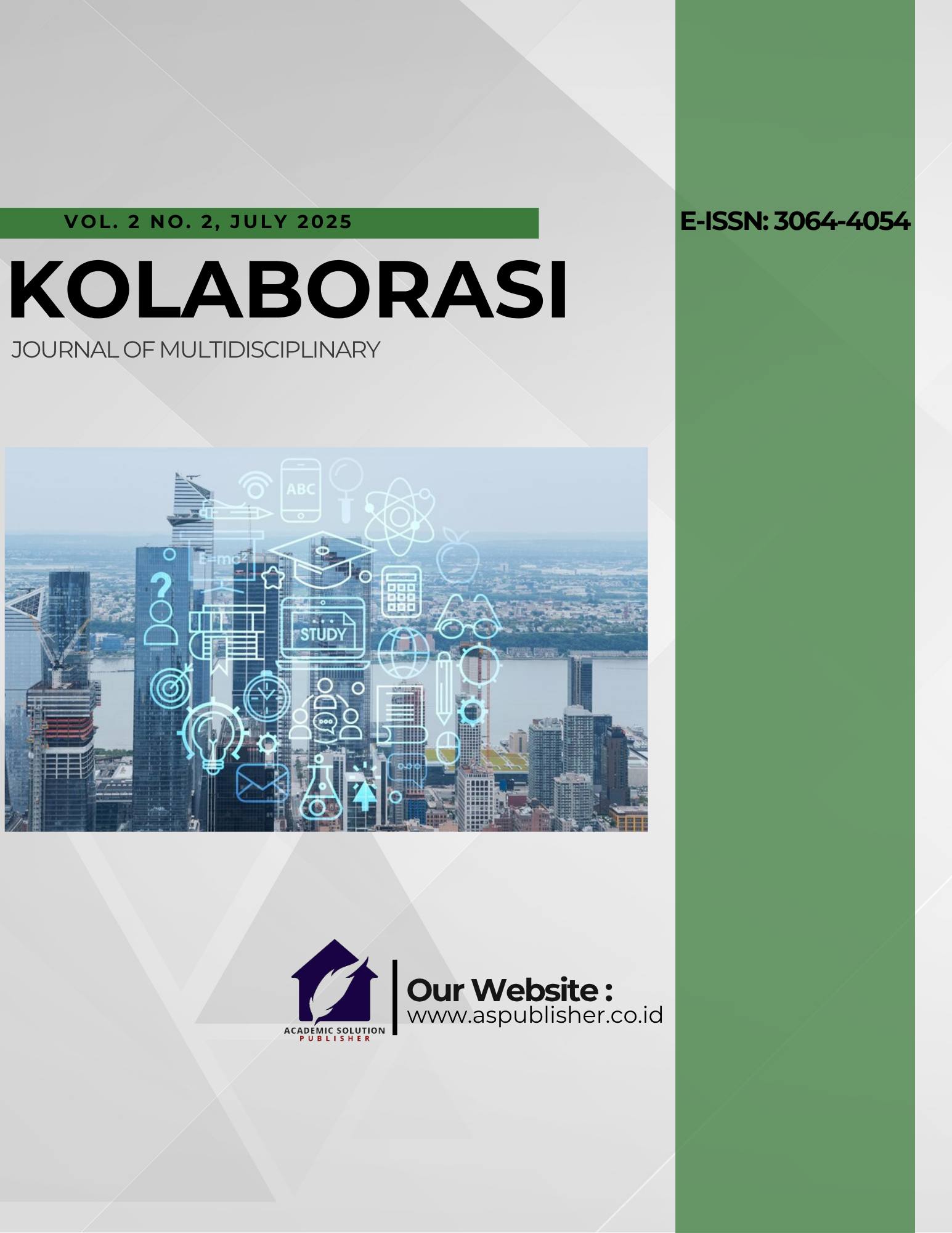Environmental Health Overview on Amaliun Street, Medan Area
DOI:
https://doi.org/10.70489/hbdmt303Keywords:
Sanitation, Waste management, HouseholdAbstract
This research aims to explore behavioral patterns and environmental conditions of households related to waste management, sanitation and cleanliness in a community. The research method was carried out using a questionnaire which was distributed directly to households, asking about activities such as waste disposal, sanitation of toddler feces, organic waste management, and disease prevention practices such as fighting mosquito bites. Apart from that, the questionnaire also evaluates the condition of the bedroom, kitchen, family room, and the main water source used. The research results show that although most households have systems for collecting waste water and adequate sanitation, there is still a tendency to dispose of waste directly into sewers or rivers. Even though the majority of households have a closed waste collection system, there are also those who still use open areas. Waste management is generally carried out by transporting it by officers or burning it, although there are still those who throw it in prohibited places. Prevention of diseases transmitted through mosquito bites is generally done by using anti-mosquito medication and regularly draining water reservoirs. Ventilation and lighting conditions in the house vary, but most are considered adequate. The majority of households rely on refillable water and drilled wells as the main water source, with an average water consumption of between 200 and 350 liters per day. This research provides a clear picture of household habits and environmental conditions, which is an important basis for developing sanitation and environmental improvement programs in the communities concerned.
References
Atikasari, Ekalina, and Lilis Sulistyorini. "Pengendalian vektor nyamuk aedes aegypti di rumah sakit kota surabaya." The Indonesian Journal of Public Health 13.1 (2018): 71-82.
Deviar, Anggina May, Budiyono Budiyono, and Mursid Rahardjo. "Indeks Kesehatan Lingkungan Di Wilayah Kerja Puskesmas Bandarharjo Kota Semarang." Jurnal Kesehatan Masyarakat 4.4 (2016): 787-793
Clano, Kawa, Cavalini & Rosa. (2006). Community participation in dengue, Brazil. Dengue Buletin. Geneva:WHO.
Fadilah, Arifah Afkar. "Hubungan Tingkat Pendidikan, Penggunaan Ventilasi Kawat Kasa dan Penggunaan Obat Nyamuk dengan Kejadian Filariasis di Indonesia (Analisis Data Riskesdas Tahun 2018)." (2022).
Hapsari, Dwi, Puti Sari, and Julianty Pradono. Pengaruh lingkungan sehat, dan perilaku hidup sehat terhadap status kesehatan. National Institute of Health Research and Development, Indonesian Ministry of Health, 2009.
Hermawan, H., Fiantoro, D., & Arrizqi, A. N. (2023). Ventilasi Alami sebagai Bagian dari Perwujudan Kenyamanan Termal. Journal of Engineering and Informatic, 1(2), 35-41.
Ikhtiar, Muhammad. Pengantar kesehatan lingkungan. CV. Social Politic Genius (SIGn), 2017.
Langit, Lintang Sekar. "Hubungan kondisi sanitasi dasar rumah dengan kejadian diare pada balita di wilayah kerja Puskesmas Rembang 2." Jurnal Kesehatan Masyarakat 4.2 (2016): 160-165.
Ministry of Health Republic of Indonesia. (2019).
Malioy, Ayodia Juliansyach. KAMPANYE CARA PEMAKAIAN OBAT NYAMUK YANG AMAN. Diss. Universitas Widyatama, 2013.
Nurhayati dan Santoso (2020) dalam “Jurnal Ekologi Kesehatan” memberikan bukti empiris mengenai efektivitas metode ini dalam konteks pengendalian vektor di lingkungan masyarakat.
Pinchoff, J., Silva, M., Spielman, K., & Hutchinson, P. (2021). Use of effective lids reduces presence of mosquito larvae in household water storage containers in urban and peri-urban Zika risk areas of Guatemala, Honduras, and El Salvador. Parasites & vectors, 14, 1-10.
Puspitasari, Anna Dian, and Dina Dwi Nuryani. "Hubungan kondisi saluran pembuangan air limbah, sarana air bersih dan jamban dengan kejadian diare pada balita di wilayah kerja Puskesmas Simpang Agung Kecamatan Seputih Agung Lampung Tengah." Jurnal Dunia Kesmas 4.3 (2015).
Rodic-Wiersma, L. (2013). Guidelines for national waste management strategies: Moving from challenges to opportunities. UNEP.
Simbolon, Hendra, and Irma Novrianty Nasution. "Desain rumah tinggal yang ramah lingkungan untuk iklim tropis." Jurnal Education Building 3.1 (2017): 46-59.
Wijirahayu, Sucinah, and Tri Wahyuni Sukesi. "Hubungan kondisi lingkungan fisik dengan kejadian demam berdarah dengue di wilayah kerja Puskesmas Kalasan Kabupaten Sleman." Jurnal Kesehatan Lingkungan Indonesia 18.1 (2019): 19-24.
Downloads
Published
Issue
Section
License

This work is licensed under a Creative Commons Attribution-ShareAlike 4.0 International License.








